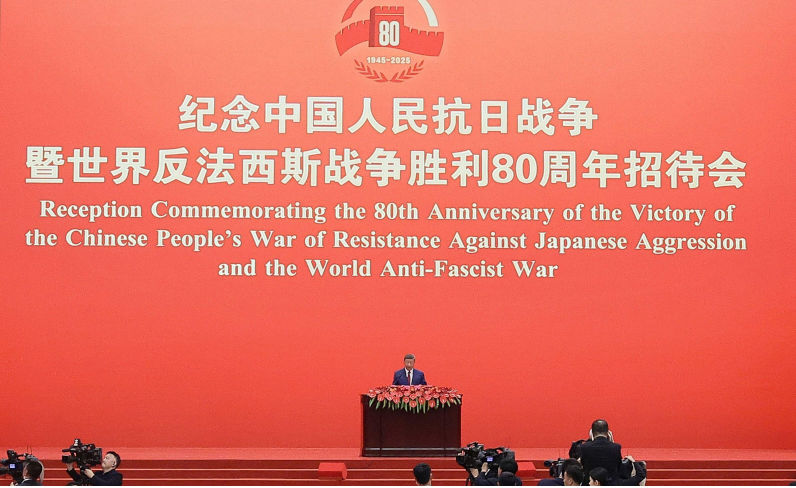Continuation in China's five-year planning
October 31, 2025
The outline of China’s 15th five-year plan was released last week. Often the objectives of a new five-year plan are a disruptive departure from the previous five-year plan. They set new directions.
This is not the case this time. This plan is a continuation of the 14th five-year plan. It was foreshadowed several weeks ago in remarks at the parade commemorating the 80th anniversary of the end of World War II or, as the Chinese marked it, the defeat of fascism.
In his speech President Xi Jinping said the great China rejuvenation is unstoppable.
Western media pounced on this, taking it as a proclamation that China’s rise was an unstoppable ambition to become an aggressive hegemon which put Taiwan under imminent threat. This interpretation was built on a failure of accurate translation.
The phrase cannot be translated as “The rise of China is unstoppable”. Xi used the collective noun for all Chinese peoples and their history of unbroken civilisation rather than China as a modern nation. It’s like talking about Australians as a people rather than Australia as a political entity.
What Xi also meant was that China would continue along the path of new economic development that had been the policy objectives of the 14th five-year plan. This interpretation was confirmed with the policy direction announced last week following the 4th Plenum of the 20th Central Committee.
This is important for two reasons. First, it signals there will be no major disruption to policy direction. The 14th five-year plan was the first stage of what has become a 10-year plan. That is very good for businesses engaging with China because it provides policy stability. The new industries that were favoured under the 14th five-year plan will continue to be supported with policy initiatives.
The second reasons is that for China the five-year plans are not some nebulous objective which can be discarded when convenient. The plan provides a blueprint for policy commitment and development. In other words, you can trust the plan will be implemented and business can confidently build investment decisions around these objectives. At times, policy development may not move as quickly as business would like, but in the long run the objectives are achieved.
The 15th five-year plan enhances its predecessor which had at its core an objective of changing “made in China” to “designed in China”. Despite the disruption of the COVID lockdowns, the progress towards these objectives harnessing the “new productive forces” was not derailed. Western commentators dismiss these policy summaries as meaningless sloganeering. Nothing could be further from the truth. Quaint or jarring as they may be to Western ears, these slogans are in the long tradition of four-character summaries of complex ideas. They are dismissed or ignored at our peril.
When this “designed in China” plan was first announced, it terrified the Americans. Their initial, and lasting reaction, was that nobody was going to displace America’s position at the top of the tree. China quickly downplayed this objective, but continued to work on its implementation in the background.
The result is DeepSeek, sophisticated, advanced and innovative electric vehicles, massive advances in battery technology, green industries and the digital economy.
The US never moved away from its initial reaction and the subsequent chip wars, economic sanctions, restrictions on exports and discrimination against Chinese students in American universities are all part of this attempt to stunt China’s development.
These attempts have failed and the 15th five-year plan is a template that carries China’s advances even further in the fields of AI, quantum computing, 6G and the digital economy. These are described as the new quality productive forces which include AI, quantum computing, clean tech and advanced thorium nuclear power reactors.
The new five-year plan continues significant advances in high-quality development achieved through improvements in technological self-reliance and strength. In the social environment, this includes cultural and ethical progress across society to further improve the quality of life.
The vision is self-reliant innovation built by integrating science, industry and education into one ecosystem. It calls for transforming research into commercial value at scale and faster than before.
Unwilling to share, America will continue to see these objectives as a threat to its dominance so we can expect to see regulatory attacks designed to cripple China’s advances.
For investors, researchers, and start-ups, that means a flood of state support heading toward AI, medical tech, healthcare tech and advanced manufacturing. If it’s strategic, scalable, and sparks self-reliance, it’s getting a grant and assistance from government.
For businesses engaged with China, the 15th five-year plan provides a clear roadmap reliably pointing to areas of opportunity. It leaves no room for surprise but plenty of room for poor translation.
The views expressed in this article may or may not reflect those of Pearls and Irritations.
